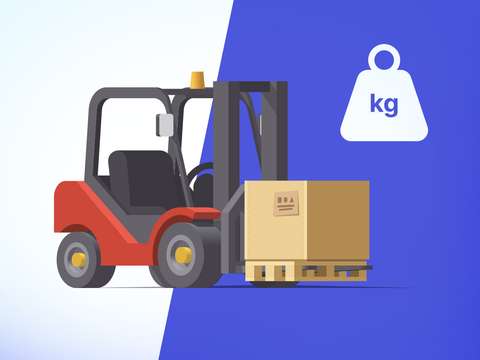Key takeaways:
- The on-demand delivery management market is growing at a staggering 9% annually
- Two-thirds of shoppers are more likely to make repeat purchases when delivery is fast and transparent. It’s not optional—it’s essential for growing your eCommerce brand.
- Personalized on-demand delivery strategies, like upselling based on order history, can increase average order values (AOV) and customer lifetime value
- Leverage your eCommerce platform to seamlessly integrate with on-demand carrier services like DHL or FedEx
On-demand delivery is reshaping how businesses connect with their customers.
It’s no longer just about ordering food from apps like Uber Eats — traditional eCommerce businesses have a golden opportunity to adopt this model and deliver a game-changing shopping experience.
Why? Because your customers demand more.
They want faster shipping, lower costs, and maximum convenience. By embracing on-demand delivery, you’re not just meeting expectations — you’re building loyalty, boosting sales, and staying ahead of the competition.
In this article, you’ll discover everything you need to know about on-demand delivery service: what it is, how it works, and actionable ways to use it to supercharge your growth.
What is on-demand delivery? Two meanings
On-demand delivery can be viewed from two perspectives:
- Immediate Delivery Services. These are services like Uber or JustEat
s, which deliver products quickly—often within hours—making them ideal for time-sensitive items such as food. - Flexible Delivery Solutions. Offered by carriers like DHL, these solutions empower eCommerce customers to choose their preferred delivery method at checkout, such as same-day or next-day delivery.
On-demand delivery gives your customers control over when and where their orders are delivered, offering unparalleled flexibility. For instance, they can customize delivery preferences to suit their schedules, such as arranging for a package to be left with a trusted neighbor or at a pickup point or a parcel locker if they are unavailable.
This level of personalization not only enhances convenience but also significantly boosts your customer satisfaction by creating a seamless and user-friendly experience.
Why should eCommerce adopt on-demand delivery?
A recent study by Statista on delivery in eCommerce highlights the importance of this approach:
- 83% of consumers expect clear delivery options at checkout, which enhances their overall shopping experience
- 51% of shoppers abandon their carts when delivery options do not meet their needs, underlining the necessity for flexibility
- Two-thirds of customers are more likely to make additional purchases when delivery is fast, transparent, and convenient
- Flexible delivery options build trust and foster customer loyalty by offering greater control over the process
- 95% of consumers are willing to switch retailers if delivery choices fail to match their expectations
Benefits of on-demand delivery for businesses and customers
| Benefits for Businesses | Benefits for Customers |
|---|---|
| Offer flexible delivery options to stay ahead of competitors | Let customers choose where and when their deliveries arrive |
| Use push notifications to build customer trust and transparency | Provide real-time tracking updates to reassure customers |
| Reduce costs by offering delivery to neighbors or parcel lockers | Allow customers to reschedule or redirect deliveries easily |
| Automate logistics processes to improve efficiency and accuracy | Enable customers to manage their deliveries through a simple app |
| Expand into global markets by supporting international deliveries | Give customers the option to receive shipments from anywhere |
| Provide real-time tracking and ETA updates to enhance operations | Keep customers informed with accurate delivery times |
| Use customer data to predict demand and optimize inventory levels | Offer tailored delivery options based on customer preferences |
| Optimize logistics to lower warehousing and re-delivery costs | Ensure seamless and stress-free delivery experiences for customers |
How does the on-demand delivery logistic process work?
The logistics process of on-demand delivery depends on the model or service you want to integrate into your business.
A) App-based on-demand delivery management
When your customer places an order through a mobile app, the system immediately springs into action.
The app sends an alert to the warehouse storing the product, prompting the staff to locate the item and prepare it for shipment.
At the same time, the platform assigns a nearby driver to pick up the package from the local hub or warehouse.
The driver handles the crucial last-mile delivery, ensuring the order reaches the customer’s doorstep within hours.
This process relies on real-time coordination between the app, warehouse, and driver network to meet same-day delivery demands.
This model is used by restaurants and local businesses through platforms like Uber Eats, delivering speed and convenience for customers who value immediacy.
B) Carrier-based on-demand delivery management
For eCommerce business, carrier-based on-demand delivery offers another powerful solution.
When a customer selects an on-demand delivery option at checkout, the system connects directly with carriers like DHL to handle the logistics.
The carrier manages everything, from sorting the item at a hub to coordinating long-distance transportation if needed, and finally executing precise last-mile delivery based on the customer’s schedule or location preferences.
Large-scale eCommerce businesses leverage this model to provide flexible shipping options, whether nationwide or internationally.
By integrating with a shipping platform designed for eCommerce, this approach ensures reliability and convenience while taking advantage of the carrier’s robust infrastructure.
How much does it cost to implement an on demand delivery system?
Implementing an on-demand delivery system with carriers like DHL involves two main costs: integration expenses and delivery fees.
- Integration costs range from $500 to $10,000, depending on whether you opt for a simple plugin or a fully customized solution.
- Delivery fees vary based on factors such as package size, weight, delivery speed, and destination
On-demand delivery typically comes with higher costs than standard shipping methods, thanks to its personalized service.
That’s why it’s essential to assess whether integrating this system aligns with your business goals and budget.
Despite the cost, many eCommerce businesses are adopting on-demand delivery alongside options like ETA (Estimated Time of Arrival), BOPIS (Buy Online, Pick Up In Store), and PUDO (Pick-Up and Drop-Off) to enhance the customer experience and boost retention.
If you handle a high volume of orders, negotiate with carriers to secure a fixed or discounted rate for your on-demand deliveries. This can make the model far more cost-effective for your business.
How to save money on integration or building an in-house process
Some platforms, like Outvio, already integrate services from DHL and other carriers, simplifying the process.These systems allow your business to offer multiple delivery options at checkout without the need for complex custom integrations.
Maybe you're wondering if it's possible to develop your own on-demand delivery app. The answer is yes, but as mentioned in that Reddit thread, it’s usually not feasible for most businesses.
How to use on-demand delivery to increase revenue in eCommerce
On-demand delivery offers more than just flexibility for your shoppers. It’s a powerful way to introduce diverse delivery options at checkout, helping you align with your business goals and your customers' needs.
Here’s how you can leverage on-demand delivery strategies to drive revenue in your eCommerce store:
1. Create premium options for fast delivery
Offer a premium fast-delivery option to generate additional revenue by charging a fee for a highly desirable service. This approach increases income immediately without requiring an increase in product sales. To implement this strategy, integrate an express shipping option into your store, allowing customers to select it at checkout.
2. Design subscription plans for unlimited deliveries
Provide customers with unlimited fast deliveries for a monthly or annual fee. Enhance the value of the subscription by including perks such as exclusive discounts or priority access to promotions. This approach not only increases customer retention but also creates a steady income stream.
3. Offer personalized deliveries at specific times
Boost sales by offering customers the option to choose specific delivery times. This service appeals to individuals with strict schedules or unique delivery needs. To implement this, add an interactive calendar at checkout where customers can select their preferred delivery time window. This customization enhances the customer experience and sets your service apart.
4. Create flash sale campaigns with immediate delivery
Drive impulse purchases by running flash sale campaigns that combine limited-time discounts with immediate delivery. Curate these campaigns to include only products available for fast delivery.
Promote the sales through banners on your website, email campaigns, and social media posts to create urgency and excitement. You can achieve even more sales by promoting additional products alongside a delivery notification system.
5. Incentivize high-value purchases with free delivery
Encourage customers to spend more by offering free fast delivery for orders that exceed a specific minimum amount. Set the threshold slightly above your average order value to motivate customers to add more products to their cart.
Clearly communicate this benefit at checkout and on product pages with messages like “Spend $10 more to get free express shipping.” Ensure the terms are easy to understand to build trust and improve customer satisfaction.
6. Integrate a real-time tracking system
Use a real-time tracking system with personalized notifications to keep customers informed at every stage of the delivery process. These shipping notifications reduce delivery anxiety while providing opportunities to recommend related products, encouraging additional purchasesBy offering transparency and a seamless experience, this system fosters customer satisfaction and increases revenue without disrupting the delivery journey.
Offer on-demand delivery solution with Outvio
On-demand deliveries are shaping the future of eCommerce. Speed, cost, and convenience are no longer optional—they’re essential. Businesses that offer fast, personalized deliveries gain a competitive edge, optimize resources, and build customer loyalty.
With Outvio, making your business a leader in on-demand deliveries is simple.
Our platform integrates with delivery providers, allowing you to offer 1-2 hour or scheduled deliveries. Outvio also automates real-time updates, keeping your customers informed and satisfied.
By centralizing post-purchase management—from delivery selection to customer communication—Outvio helps you process orders faster, cut costs, and improve efficiency. Stand out in a competitive market and elevate your customer experience with Outvio.




